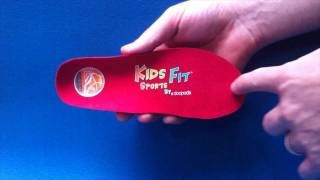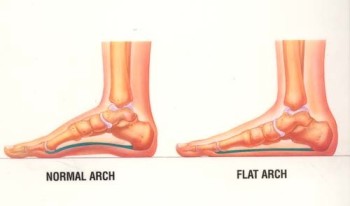Do Children With Flat Feet Require Treatment?
Ideally, feet function best when they have an arch. The arches of the foot provide the space required for certain tendons and ligaments to function as springs. They help the feet absorb the impact of steps, support the weight of the body and make walking more efficient by returning some energy with each step.
Of course, some people have flat feet instead of arches. When the tendons in the feet are too loose, the entire sole comes down and contacts the ground instead of arching over it. In some cases, having flat feet can be painful or lead to more strain and injury.
If you are a parent, you may have noticed your child has flat feet. You may be wondering if it’s an issue requiring treatment. We all want the best for our children and don’t want to leave serious problems unaddressed!
In fact, virtually all babies will be born with flat feet because the “baby fat” makes the feet rounded instead of having a clearly defined arch.
Also, in the early months of your child’s life, the tendons in the foot are still not fully formed.
When children reach two or three years old, their foot arches should start to form. As the tendons in the feet strengthen and get tighter, the arch begins to develop. By the time children reach five years old their arches should be fully formed.

In order to help their arches to develop well, you can encourage them to walk, run and play barefoot. Walking barefoot, especially on uneven ground, helps strengthen the tendons in the feet that are responsible for forming the arch.
If your child is five years old or older and still has flat feet, they might not need treatment, but it could still be a good idea for them to get an examination. There are a couple different causes for persistent flat feet.
If the flatness is simply a result of looser tendons, their feet will still be flexible, and they will probably have no other adverse symptoms. One quick way to check for this type of flat feet is to have them stand up on their toes. If the arch forms when they stand on their toes, then they have flexible flat feet.
However, if the flatness persists, there may be another issue causing the flat feet. This condition is called having rigid flat feet and will require more treatment.
In more extreme cases, surgery may be required to correct the problem.
For most cases of flexible flat feet, no treatment is necessary for your child. However, if your child with flat feet is experiencing continued pain or presents signs of rigid flat feet, then it is a good idea to have their feet examined and assessed for orthotics.

As a parent there’s a lot you can do to help make sure your children feel great and develop healthy lifestyle habits that stay with them for life. Read about these tips by clicking here.






